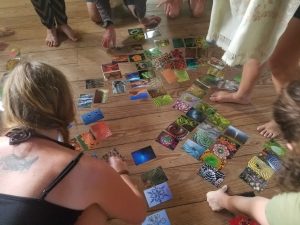Mother nature speaks in its own language, and we can read it and speak it once we take a deeper look, thus allowing us to utilize this beautiful evolutionarily crafted tongue.
The patterns found in ecology have been refined over millions of years to allow for dynamic exchange of energy and resources. There are endless amounts of patterns we can identify that serve different purposes, lobular and dendritic, serpentine and radial symmetry, and of course there’s the golden ratio and many, many more. These mathematical depictions show that edges are key- and increasing the surface area of marginal spaces is the key to being able to maximize inputs and outputs. There are two important skills to using patterns. The first is tracking, first identifying individual marks, then following a sequence of marks to see a trail, and lastly encompassing a network of trails into a pattern. We can do this by both inspecting (infinitely looking within an element to find the root analysis of why it is the way it is), and aspecting (infinitely looking outwards from an element to understand the forces which have acted upon it). Humans are not capable of uncovering the mysteries between many connections of an ecosystem, so we must constantly be re-asking why and how, using the patterns as our teacher and our minds to unlock the codes. The second key is to think creatively about how to re-invision patterns into ecosystems that are man-made to benefit and regenerate an earth full of ecosystems that have been spun out of whack by human disturbances.

Identifying and organizing patters exercise

Can you see the cogs in my brain turning at 100 miles a minute??
Using ecological patterns to design landscapes allows for amazing nutrient exchange, and lets the elements in a system prosper in the setting they’ve learned to live in. Designing with and for nature creates a balance that can withstand challenges.
One way to use patterns is to actually physically create the structures. Some examples include keyhole beds, mandala gardens, curving pathways, and companion and guild plantings, all expanding the rims around elements so they can fully interact with each other.
Every permaculture technique implemented into a design shifts the pattern, and hence, the system.

Example of a swirling plant design

Mandala garden – utilizing space and edges between plants and atmosphere

Nature doesn’t work in straight lines, why should we?
There




